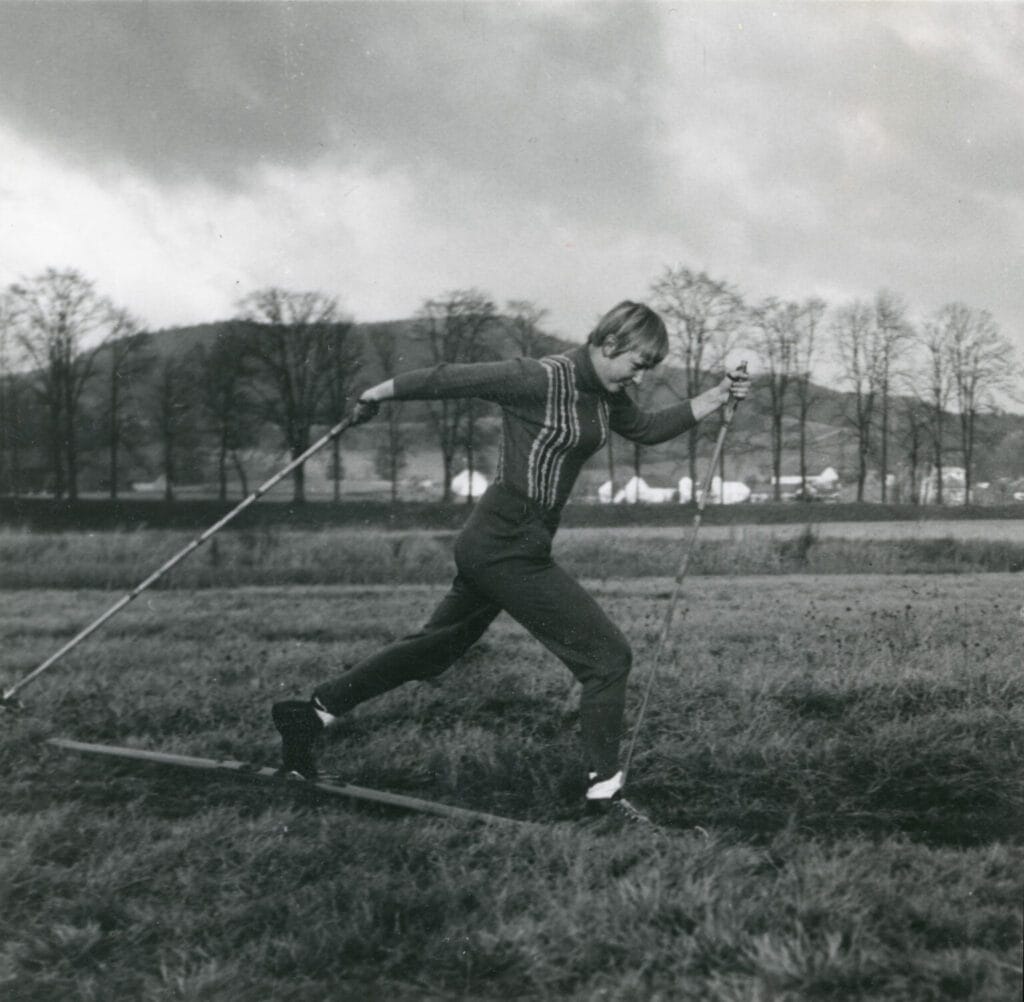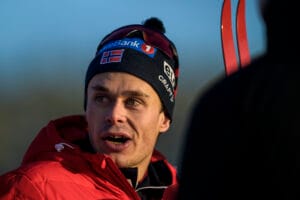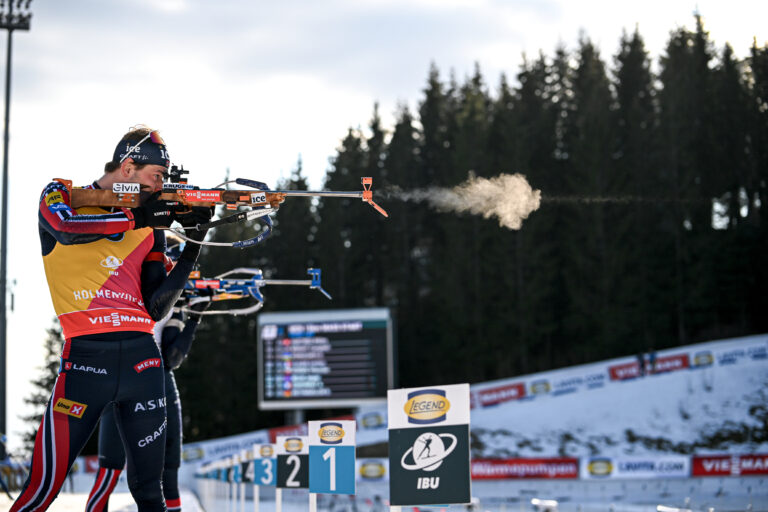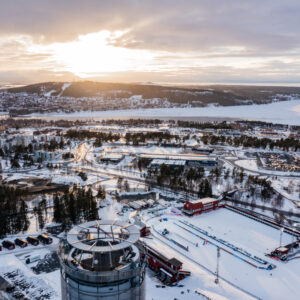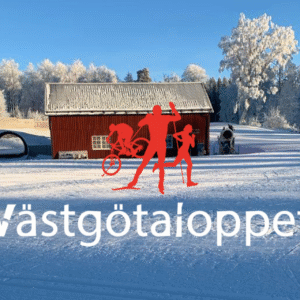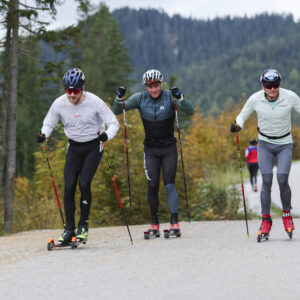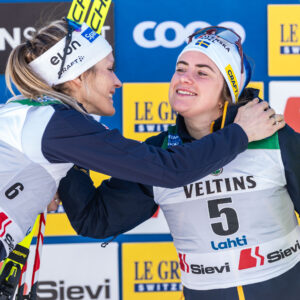The history of summer cross-country skiing in the Czech Republic
What did summer skiing and training look like in the Czech Republic when there wasn’t enough funding to travel to glaciers or ski tunnels?
Special training, summer skiing, imitation exercises – whatever you call it. Today, the desire to extend movement in a specialized environment, following the historical development of sports like athletics (indoor training and competitions), swimming (indoor pools), or ice hockey (artificial rinks), is quite feasible for cross-country skiers. With sufficient funding, they can train on glaciers or in artificial snow tunnels. But what did they do as early as the 1960s, when they didn’t have the money?
In the 1960s, clever Czech minds pondered how to prepare for skiing on home soil even in late summer. At that time, the mountains were snow-free, and there were certainly no sub-zero temperatures. Thus, eager fans and cross-country skiers on narrow skis would long for the chilly October mornings with frost on the ground; on such days, skiing was particularly effective. Unfortunately, if the frost didn’t appear on a Sunday, afternoon training on frozen grass after work or school became an impossible dream – the frost rarely lasted through the day.
Also Read: A historical look back at the first roller skis in the Czech Republic
In Europe, indoor skiing halls (Vienna, Paris…) were already being used, where people “skied” under lights on soda ash or kaolin – but only downhill, which was of little use to cross-country skiers. Inventive individuals from Podkrkonoší and Police nad Metují came up with several ideas to enhance cross-country preparation and replicate the cyclical movement patterns of skiing on snow.
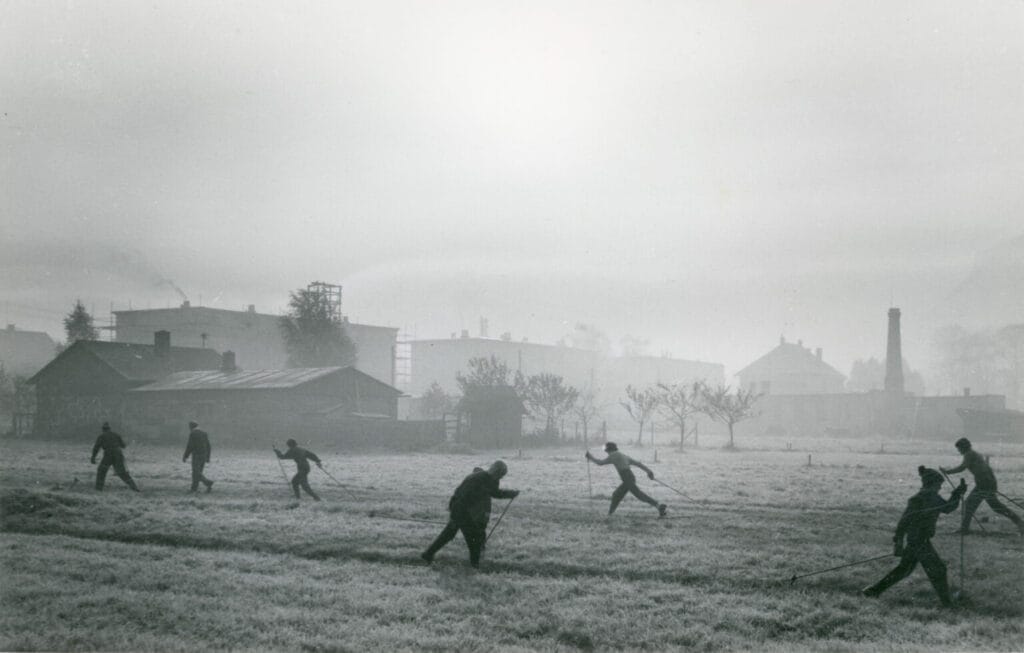
The first training sessions on artificial materials
The very first attempts to train on artificial surfaces, unsurprisingly, took place in Prague. According to PaeDr. Jaroslav Honců, a former national team coach, a 400-meter artificial surface track appeared two years after the 1956 Winter Olympics in Cortina, located at Císařská louka by the Vltava River.
The base was made of boards from a demolished Spartakiad tribune. The idea’s father was Felix Chovanec, a prominent skiing coach, supported by Olympic skier Pepík Prokeš. Honců, only 19 at the time, also helped build the facility and participated in the opening ceremony.
That opening was a big deal, organized by the Slavia sports club. Honců recalls the first test runs (the track was sprayed with diesel) and a painful memory: in the rush to finish construction, they forgot to remove a few nails from the planks, leading to nasty scrapes for both Prokeš and Honců.
Terezčák’s track in Tatranská Lomnica, almost 1 km long, was the longest in the country, confirmed by former national team member Vít Fousek Sr.
Skiing on pine needles
November 1961. In the forest above the cemetery in Police nad Metují, ski veterans Mirek Hejnyš and Jirka Čejka created a sensation. Using old Marathon, Olympie, and Nola skis, they collected dry pine needles (carefully avoiding decayed material) using potato sacks and wooden rakes. Skis glided incredibly well on the needles.
They transported the sacks by wagon to a field near the Na Zámečku ski jump. There, the needles were spread in shallow ditches, leveled, sprayed, and—amazingly—it worked. A unique training invention was born: skiing on pine needles.
The track had two 100-meter straights, and everyone, from children to adults, trained there. Curious bystanders thought the skiers had lost their minds.
The novelty caught on. In 1963, a television crew came to film a segment for BBV. Even a sports doctor, Vojta Soulek, visited to conduct physiological tests. He was impressed but found it too demanding for children to handle. One of the kids training there was 11-year-old Jirka Beran, who later placed 6th at the 1978 World Championships in Lahti. The pine needle trail allowed for training runs up to 15 km when slightly frozen. It remained in use until 1968.
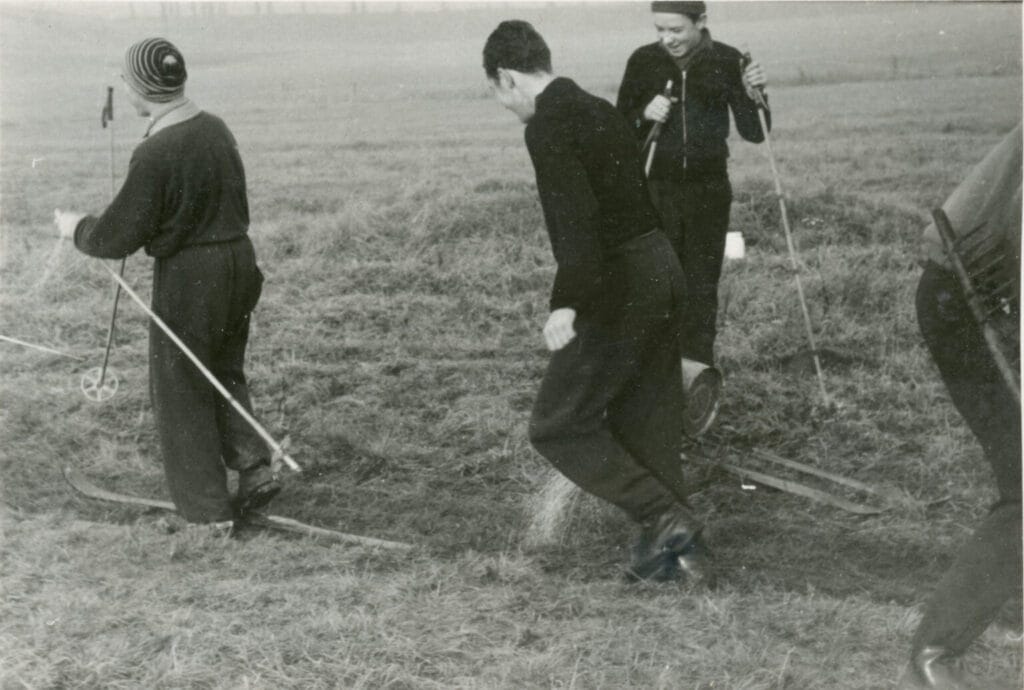
Artificial materials
Ski jumpers had already been experimenting with straw and artificial mats since the 1950s, imported from East Germany.
In the early 1980s, the article’s author got an idea – if plastic mats work for jumpers, why not for cross-country skiing? At the Popelky ski jumps in Lomnice, young skier Jirka Belda tested plastic surfaces using old Fischer skis.
They even made a bet whether Belda could ski down a small hill on plastic. He tried, crashed hard, and destroyed his watch, but they continued testing on flat ground using layered durofoil panels, which worked surprisingly well.
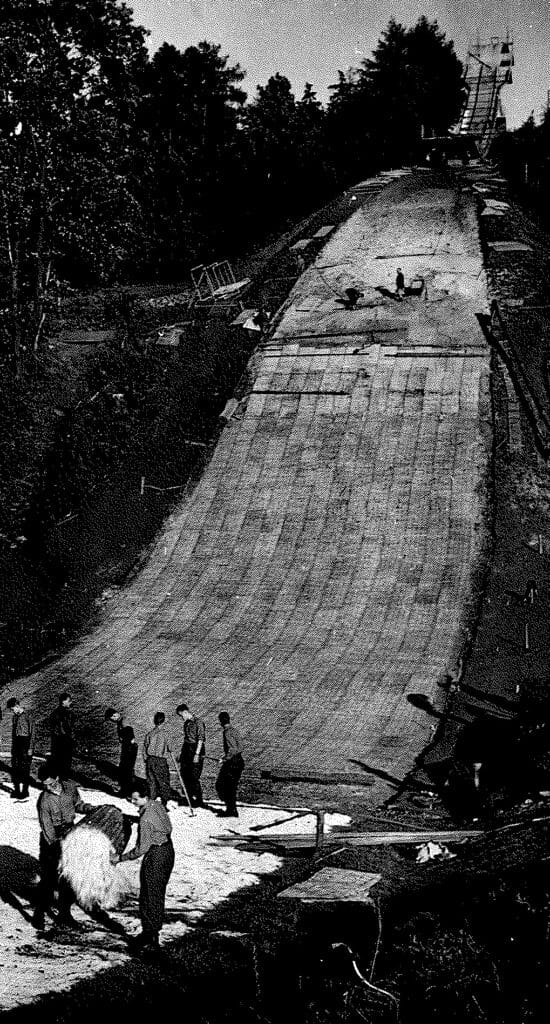
Success and further innovation
A project was approved by the elite sports department at Strahov. Soon, materials began to arrive – rubber belts from mining conveyors, 3,000 durofoil panels, boards, hoses, pump systems, and more.
After weeks of meticulous work, a triangular ski loop was built: 150 meters uphill, 150 downhill, and 300 meters flat. Early problems included surface temperature, ski waxing, and speed. Cold weather (below 10°C) improved the glide. They experimented with water sprays, dish soap (Jar), and even fish scale flakes (used in canoeing) to improve glide, but these melted quickly.
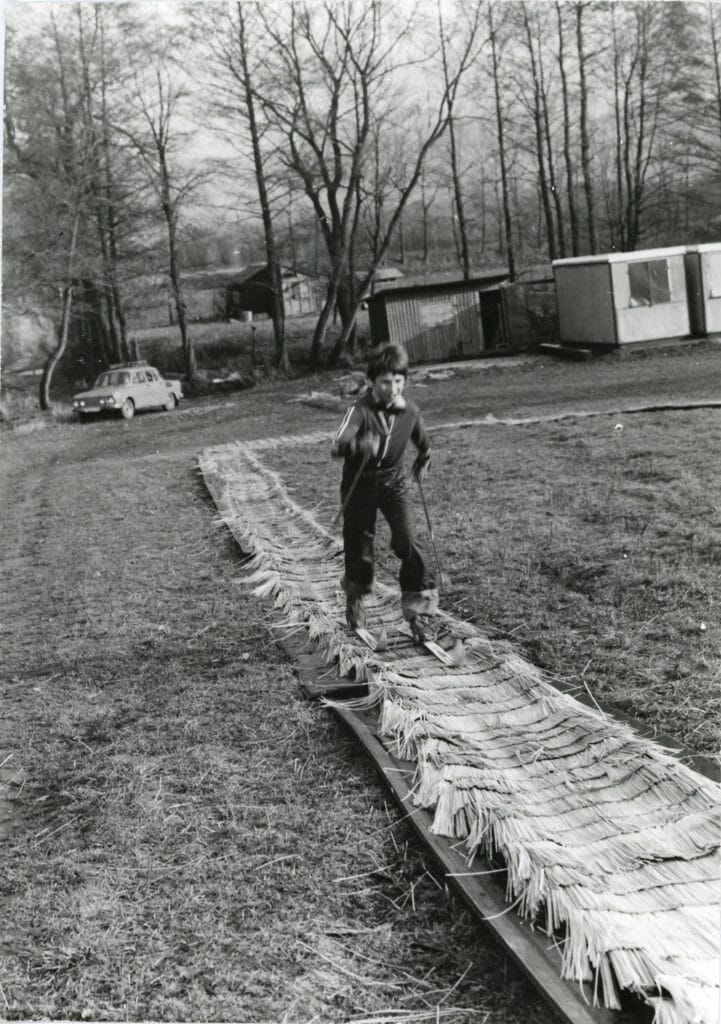
Best results came from using Czech paraffin wax no. 7 (red Skivo). Applied roughly, without ironing, it lasted about 5 km.
This setup was used during several October training blocks for pre-season preparation. Limitations included the 80 cm width of the rubber base; ski pole tips sometimes missed the rubber and dug into the ground, causing dirt to scatter and requiring constant cleaning.
Like earlier methods (durofoil, pine needles), training time was limited to about 45 minutes. But it allowed for 2×5 km sessions with re-waxing and re-spraying. The movement mimicked real skiing well.
Battery foil ski trails
Even earlier, around 1962, cross-country skiing was practiced on battery separator foil. In places like Vrchlabí, Trutnov, and Skuhrov, 400-meter tracks were laid with foil originally used inside car batteries. These had a slight longitudinal texture and were spread on boards with dual tracks.
They were sprayed with diesel or water-diesel mixes. Some innovators used foam from fire extinguishers to achieve a better glide. In Skuhrov, the nearby factory used non-smelly tinning oil, so they used that instead of diesel.
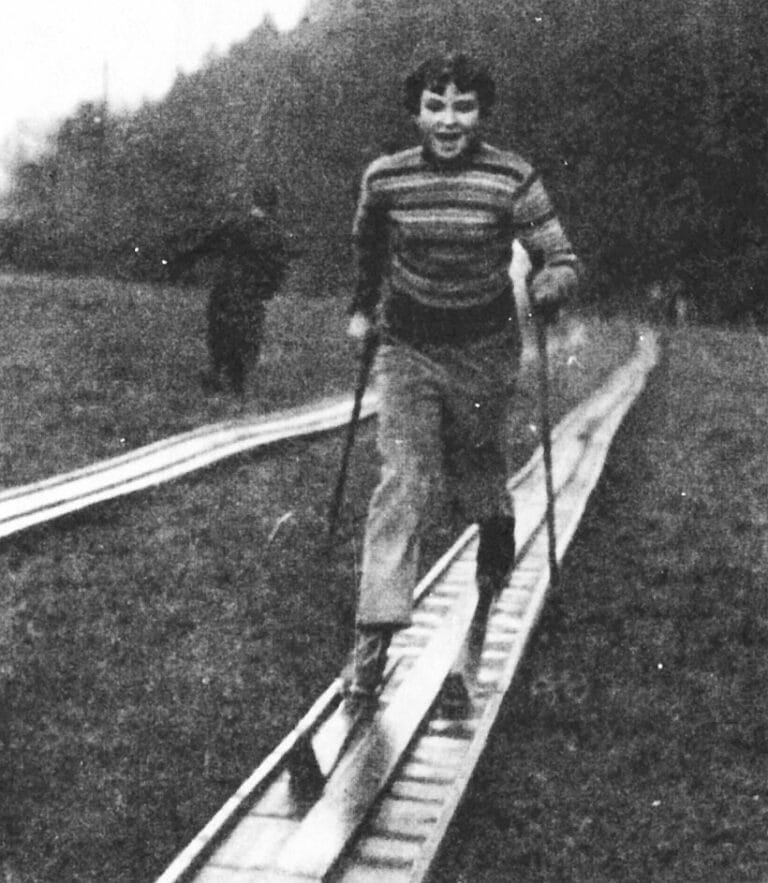
The Vrchlabí track
Building the track near Bílý Potok in Vrchlabí came with complications. Boards had to be impregnated to prevent rotting. One of the builders, Toník Klazar, recalls:
“Ilja Matouš and I were like Pat & Mat. We hauled a full barrel on a rickety cart, spilling as we went. The climax came when crossing a stream—the barrel tipped over, and the chemicals started dissolving. Suddenly, all living things jumped out of the water. We tried to save as much as we could, but eventually just sat there estimating how far the environmental disaster would spread…”
Meanwhile, other helpers were secretly adding boards from a separate pile at the sawmill, “helping” the ski team save on materials.
Photo: The longest track of the 1960s in Skuhrov nad Bělou, nearly 400 meters / Author’s archive
This article was updated. The original version was published on bezky.net in September 2019.
Are you interested in training for long-distance and traditional cross-country skiing? Click HERE and read more about it.
